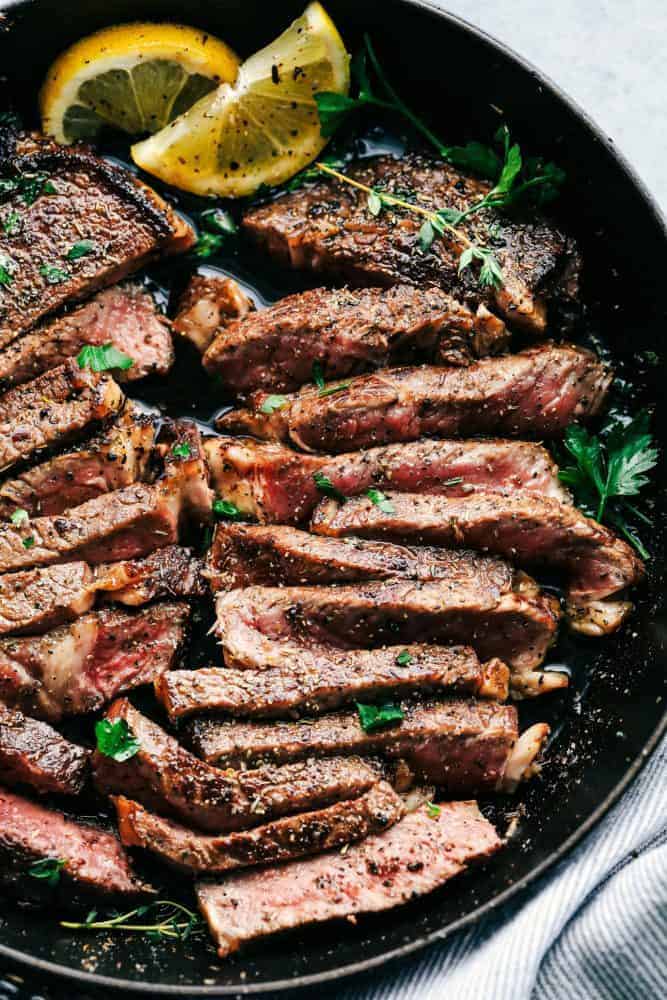Meat Marinates and Spices Ideas for Flavorful Dishes
From Ranch to Table: Fresh and Costs Meat Choices
The trip of meat from ranch to table encapsulates a complex interplay of high quality, principles, and sustainability. This change not just enhances the dietary profile of meat yet likewise supports neighborhood economic situations.
Understanding Meat Sourcing
As customers end up being significantly familiar with the origins of their food, understanding meat sourcing has actually gained critical relevance. Meat sourcing entails mapping the journey of meat from ranch to table, encompassing numerous elements such as farming methods, pet well-being, and ecological effect. This understanding equips customers to make educated selections that align with their worths, especially regarding sustainability and moral factors to consider.
The sourcing of meat can vary significantly based on multiple requirements, including the type of livestock, farming techniques, and geographical area. For instance, grass-fed beef frequently comes from pasture-based systems that promote pet well-being and reduce ecological destruction. Conversely, conventional meat might include extensive farming techniques that increase worries pertaining to antibiotic use and environment devastation.
Furthermore, traceability plays an important duty in meat sourcing. Knowing the specific ranch or region where the meat comes from aids consumers make certain high quality and security. Lots of customers currently seek certifications or labels that show gentle treatment and lasting practices, reflecting a growing need for transparency in the food supply chain. Inevitably, understanding meat sourcing not only improves consumer selection however also cultivates responsible consumption and sustains honest farming practices.
Advantages of Fresh Meat
Choosing fresh meat uses countless advantages that expand beyond taste and texture. Fresh meat generally preserves higher dietary worth compared to its frozen or processed counterparts. It is typically richer in essential minerals and vitamins, such as B vitamins, iron, and zinc, which are crucial for keeping overall health.
Furthermore, the sourcing of fresh meat commonly entails much shorter supply chains, reducing the time between farm and table. This suggests that the meat is less likely to shed its dietary stability during transportation and storage. In addition, consumers can experience enhanced taste and juiciness, which can raise cooking experiences.
Fresh meat additionally provides a possibility for consumers to support regional farmers and promote sustainable farming methods. When buying from local resources, individuals can add to their local economic situation and cultivate a better connection to the food they take in.
Finally, fresh meat is usually without the preservatives and ingredients frequently found in refined alternatives. This makes it a cleaner, much healthier choice for those aiming to reduce their consumption of artificial ingredients. Generally, the advantages of choosing fresh meat encompass health, taste, and a sense of community interaction.
Animal Welfare Criteria
Making sure high animal welfare criteria is essential for both moral considerations and the top quality of meat products. The treatment of livestock directly affects not only the honest implications of meat production however likewise the general top quality and safety of completion products. Animals elevated in gentle conditions are much less stressed, causing healthier animals and, consequently, premium meat quality.
Laws and certifications worrying pet welfare have ended up being progressively significant in the meat sector. These frameworks ensure pets are offered with adequate room, correct nourishment, and humane handling throughout their lives. Practices such as pasture-raised systems and free-range settings add to much better pet welfare by enabling animals to show natural habits, which is vital for their wellness.
Additionally, customers are becoming extra critical pertaining to the resources of their meat, causing a growing need for items that abide by rigid pet well-being standards. This change not only promotes ethical farming techniques however also motivates manufacturers to adopt steps that boost the wellness and well-being of their animals. Meat. Eventually, prioritizing animal welfare is not simply a moral imperative; it is also a path to creating premium-quality meat that fulfills consumer expectations

Lasting Farming Practices
Sustainable farming methods play a crucial role in enhancing both pet well-being and the quality of meat products. These methods stress the significance of environmental stewardship, moral treatment of livestock, and resource efficiency. By carrying out rotational grazing, farmers can promote healthy pasture environments, permitting pets to feed on nutrient-rich grasses while preventing overgrazing. This approach not just sustains animal health and wellness but also i thought about this enhances the soil, lowering the requirement for synthetic plant foods.
In addition, lasting farming typically includes incorporated parasite administration and natural feed choices, reducing making use of harmful chemicals. This technique not only safeguards animal wellness but additionally leads to cleaner, safer meat items for customers. Water preservation strategies, such as rain harvesting and efficient irrigation systems, better contribute to sustainable methods, making sure that resources are utilized sensibly.
Furthermore, promoting biodiversity with polyculture systems and protecting habitats for wildlife enhances the durability of farming ecological communities. By focusing on these sustainable approaches, farmers can produce top quality meat that meets customer demand while advertising ecological balance. Eventually, embracing lasting farming techniques is necessary for creating an extra responsible and resistant food system that benefits animals, farmers, and customers alike.
Picking High Quality Over Amount
Frequently, customers are encountered with the problem of picking in between amount and top quality when it comes to meat items. While buying bigger quantities might appear economically advantageous, the lasting benefits of selecting high-quality meat much exceed the prompt cost savings. Quality meat is often sourced from animals raised in lasting environments, where they are given proper nourishment and treatment, leading to premium flavor and nutritional worth.
Premium meats are commonly without unsafe ingredients, hormonal agents, and anti-biotics that are often present in mass-produced alternatives (Meat). This not only makes certain a much healthier eating experience but also supports ethical farming methods that prioritize animal well-being. Additionally, premium meats tend to have a better texture and flavor, enhancing the overall cooking experience
Spending in quality meat motivates customers to value smaller sections, permitting for an extra conscious method to consuming. This shift not only affects individual health positively but likewise promotes lasting intake patterns that can benefit the environment. To conclude, prioritizing high quality over quantity when selecting meat items promotes a much more responsible and health-conscious way of living, ultimately improving both the eating experience and the world.
Conclusion
